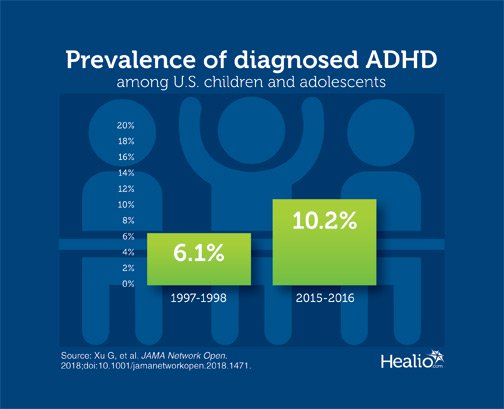ADHD diagnoses increase significantly over 20 years
Click Here to Manage Email Alerts
The estimated prevalence of diagnosed ADHD in U.S. children and adolescents increased significantly in the last 2 decades, according to study results published in JAMA Network Open.
“The prevalence of ADHD has changed over time,” Guifeng Xu, MD, a professor in the department of epidemiology at the University of Iowa College of Public Health, and colleagues wrote. “Several previous studies in the United States have shown an increase in ADHD prevalence over the past years. ... Information about the current prevalence of ADHD and its long-term trends over the past decades is needed to inform future research, clinical care and policy decision-making on ADHD.”
Xu and colleagues analyzed data from the CDC’s National Health Interview Survey. Conducted annually from 1997 to 2016, the survey collected information through personal household interviews with parents and guardians. The researchers focused 186,457 children and adolescents aged 4 to 17 years in their analysis, performed in January 2018.
A diagnosis of ADHD was the main outcome and measure of the study, they said.
Among the children included in the analysis, 51.5% were boys; 27.5% were Hispanic, 49% were non-Hispanic white, 15.5% were non-Hispanic black and 8% were non-Hispanic other race. The researchers wrote that 14,704 (7.9%) of the children were reported to have been diagnosed with ADHD. Most were boys (71.7%), with 17% of all those diagnosed with ADHD being Hispanic; 61.3%, non-Hispanic white; 15.8%, non-Hispanic black; and 5.9% non-Hispanic other race.
When survey weights were used “to account for unequal probabilities of selection, oversampling, and nonresponse,” the prevalence of diagnosed ADHD was 10.2% in 2015-2016 — up from 6.1% in 1997-1998 (P < .001), according to the researchers. They said the prevalence increased significantly across all subgroups by age, sex, race and ethnicity, family income and geographic region during the time period.
Boys had a higher prevalence of diagnosed ADHD compared with girls (14% vs. 6.3%). Non-Hispanic white and non-Hispanic black children and adolescents had higher prevalences (12% and 12.8%, respectively) compared with Hispanic children and adolescents (6.1%).
“This continued upward trend in diagnosed ADHD among children and adolescents points to the need to better understand potentially modifiable environmental risk factors, as well as provide adequate resources for the diagnosis and treatment of affected individuals in the future,” the researchers concluded. – by Bruce Thiel
Disclosures: The authors report no relevant financial disclosures.

